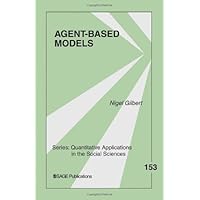
Average Reviews:

(More customer reviews)This book is fine as far as it goes. But ABM can only be done with software and it fails to mention one of the key players in this area. The author points out that NetLogo is easiest to learn but too simple for large models. Then he points you to the programmers-only solutions of Repast, Swarm, and Mason -- all academic development environments that require you to program in Java. He bemoans the gap between these two extremes yet somehow he skips AnyLogic which is a true high-level application with drag-and-drop model building, sophisticated libraries, model wizards to help beginners, and many advanced features.
It's hard to believe someone would write a book on ABM without first doing at least a Google search on the available tools.
At any rate, the book is a solid theoretical treatment. If you are an expert Java programmer with the time to code models from scratch this will be an important book.
Click Here to see more reviews about: Agent-Based Models (Quantitative Applications in the Social Sciences)
Agent-based modeling (ABM) is a technique increasingly used in a broad range of social sciences. It involves building a computational model consisting of 'agents," each of which represents an actor in the social world, and an "environment" in which the agents act. Agents are able to interact with each other and are programmed to be pro-active, autonomous and able to perceive their virtual world. The techniques of ABM are derived from artificial intelligence and computer science, but are now being developed independently in research centers throughout the world.In Agent-Based Models, Nigel Gilbert reviews a range of examples of agent-based modeling, describes how to design and build your own models, and considers practical issues such as verification, validation, planning a modeling project, and how to structure a scholarly article reporting the results of agent-based modeling. It includes a glossary, an annotated list of resources, advice on which programming environment to use when creating agent-based models, and a worked, step-by-step example of the development of an ABM.This latest volume in the SAGE Quantitative Applications in the Social Sciences series will have wide appeal in the social sciences, including the disciplines of sociology, economics, social psychology, geography, economic history, science studies, and environmental studies. It is appropriate for graduate students, researchers and academics in these fields, for both those wanting to keep up with new developments in their fields and those who are considering using ABM for their research.Key Features
Aimed at readers who are new to ABM

No comments:
Post a Comment